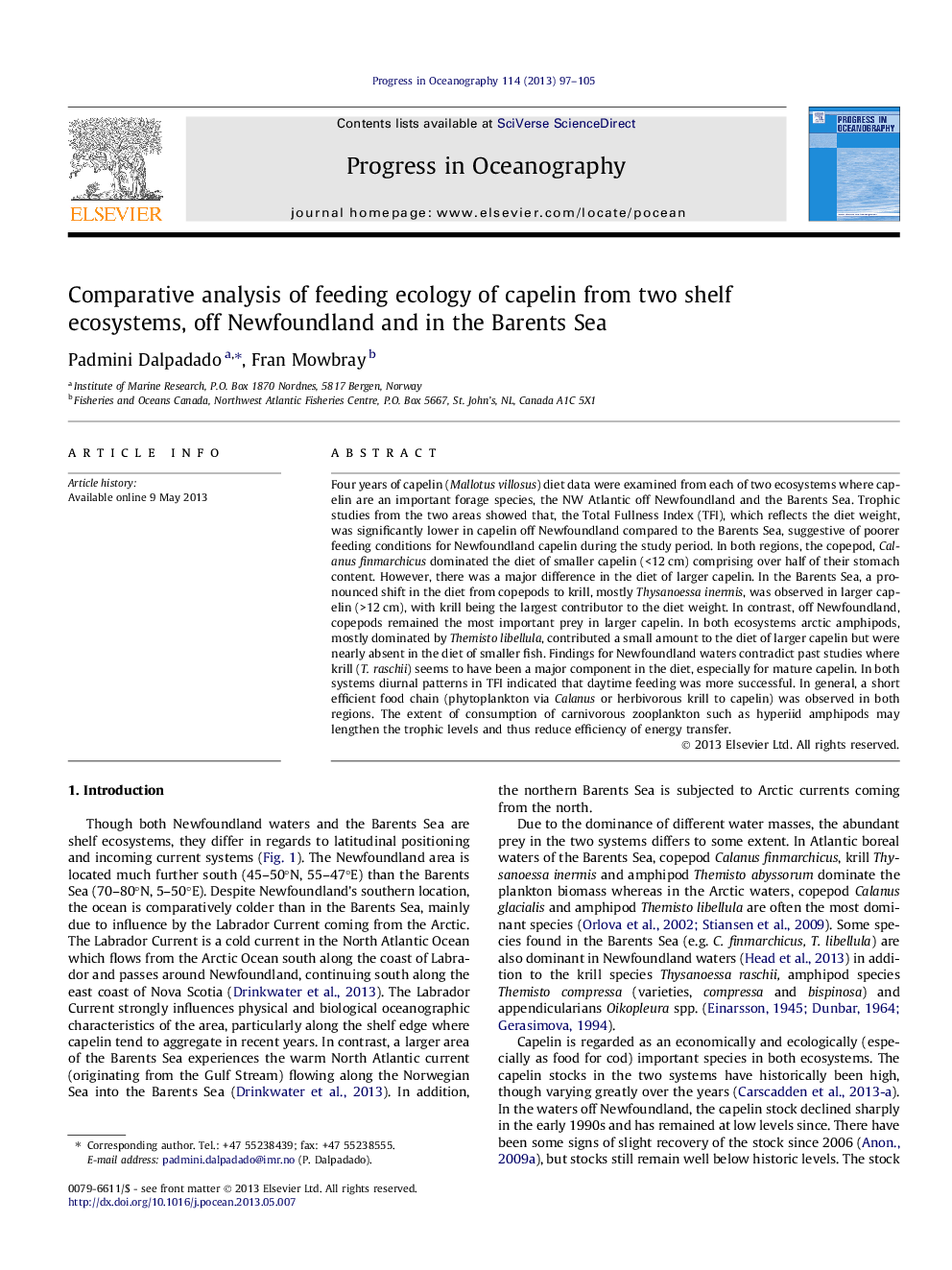| کد مقاله | کد نشریه | سال انتشار | مقاله انگلیسی | نسخه تمام متن |
|---|---|---|---|---|
| 4553173 | 1627941 | 2013 | 9 صفحه PDF | دانلود رایگان |

Four years of capelin (Mallotus villosus) diet data were examined from each of two ecosystems where capelin are an important forage species, the NW Atlantic off Newfoundland and the Barents Sea. Trophic studies from the two areas showed that, the Total Fullness Index (TFI), which reflects the diet weight, was significantly lower in capelin off Newfoundland compared to the Barents Sea, suggestive of poorer feeding conditions for Newfoundland capelin during the study period. In both regions, the copepod, Calanus finmarchicus dominated the diet of smaller capelin (<12 cm) comprising over half of their stomach content. However, there was a major difference in the diet of larger capelin. In the Barents Sea, a pronounced shift in the diet from copepods to krill, mostly Thysanoessa inermis, was observed in larger capelin (>12 cm), with krill being the largest contributor to the diet weight. In contrast, off Newfoundland, copepods remained the most important prey in larger capelin. In both ecosystems arctic amphipods, mostly dominated by Themisto libellula, contributed a small amount to the diet of larger capelin but were nearly absent in the diet of smaller fish. Findings for Newfoundland waters contradict past studies where krill (T. raschii) seems to have been a major component in the diet, especially for mature capelin. In both systems diurnal patterns in TFI indicated that daytime feeding was more successful. In general, a short efficient food chain (phytoplankton via Calanus or herbivorous krill to capelin) was observed in both regions. The extent of consumption of carnivorous zooplankton such as hyperiid amphipods may lengthen the trophic levels and thus reduce efficiency of energy transfer.
Journal: Progress in Oceanography - Volume 114, July 2013, Pages 97–105